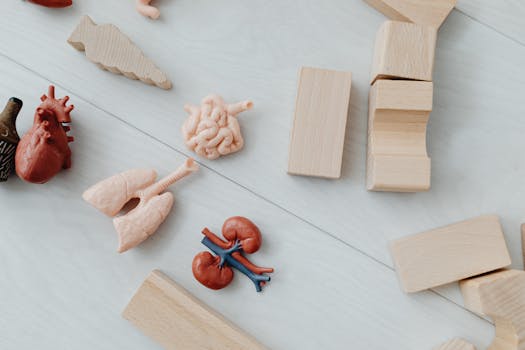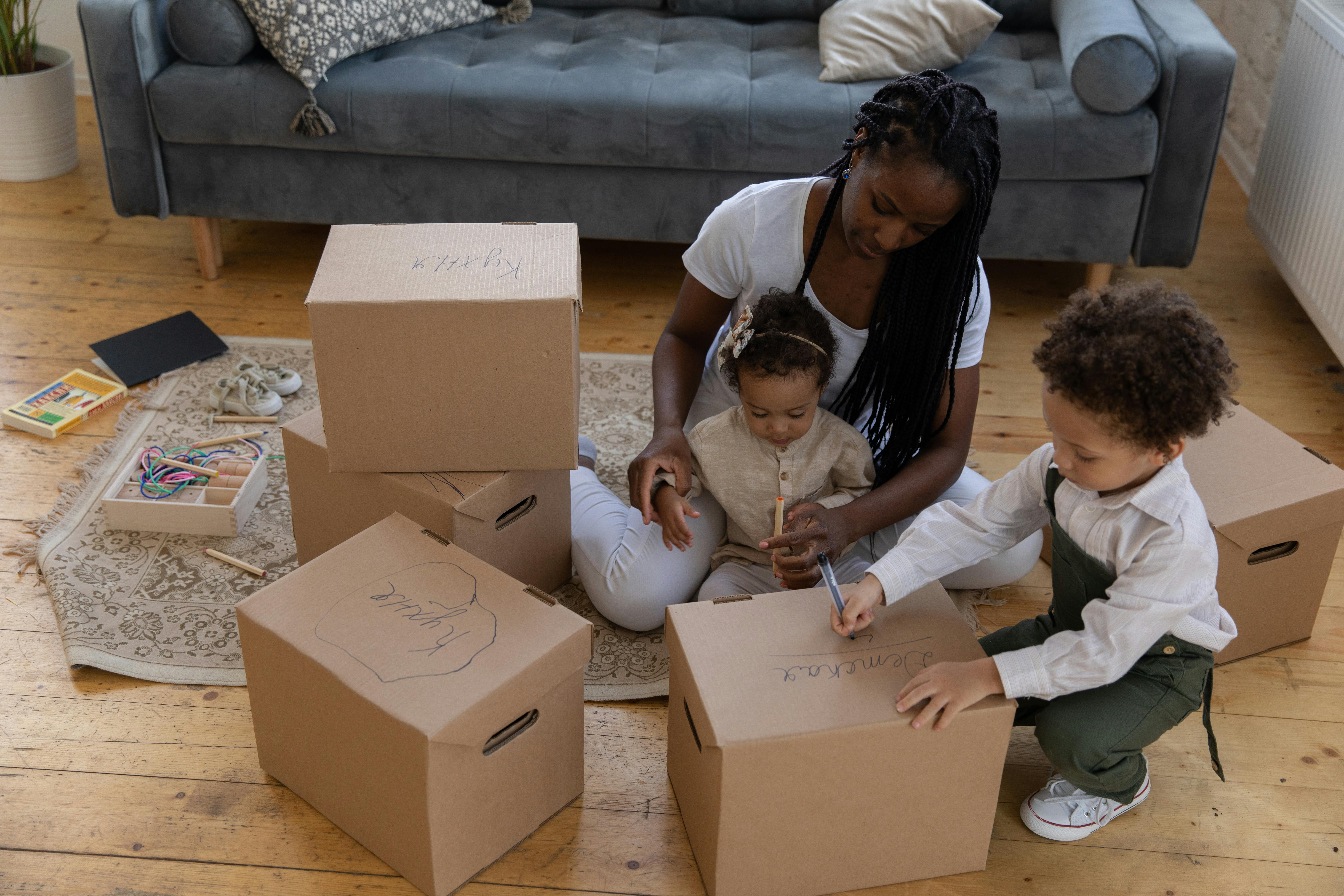As an affiliate, I earn from qualifying purchases, but this doesn't affect the reviews or recommendations—your trust is important to me!
Creating Exciting DIY Projects for Kids: Science Art and Food

Today, We're Making:
- - Stargazing Constellation Art Project
- - Edible Rock Candy Geodes Science Experiment
- - Garden Pizza Recipe
- - Magnetic Mini-Golf DIY Game
- - DIY Planets Solar System Model
- - Crystal Growing Science Experiment
- - Galaxy Popcorn Recipe
- - DIY Moon Phases Board Game
- - Handmade Miniature Rocket Launcher Experiment
Are you tired of trying to entertain your kids with the same old games and activities?
We've all been there. When the screens go off, the constant refrain of 'Mom, I'm bored!' can drive anyone crazy. Luckily for you, there's a whole world of exciting DIY projects for kids that not only keep them entertained but also engage their budding minds in the areas of science, art, and food.
Unleash the Creativity: Fun DIY Projects for Learning and Fun!
From creating stunning Stargazing Constellation Art to experimenting with Edible Rock Candy Geodes and cooking up a Garden Pizza Recipe, to building a Magnetic Mini-Golf DIY Game, there's so much to explore. These are kid-friendly projects that merge learning with fun, tapping into the educational power of STEM and the creative freedom of art.
Get Ready for an Adventure!
So buckle up and get ready to transform ordinary days into extraordinary learning adventures with these budget-friendly kids' projects.
A Sky Full of Stars: The Stargazing Constellation Art Project
Delight in the mysteries of the night sky with a DIY Stargazing Constellation Art Project. This kids' art project is a perfect indoor activity that beautifully marries science and creativity. Using some simple paint and bright, twinkling stars, your kids will be able to reimagine the wonders of the cosmos right in your living room.
To add an educational twist to this science art project, you can talk about the different constellations and their mythological origins. This engaging activity not only stimulates a child's problem-solving and critical thinking skills but also broadens their cultural and historical knowledge. Who knew learning through play could launch such a vibrant conversation about ancient Greek myths and legends!
Delicious and Educational: The Edible Rock Candy Geodes Science Experiment
Swap out the usual kids science projects with the Edible Rock Candy Geodes Science Experiment. Let's face it, no child can resist anything that involves both eating and creating. With some basic ingredients, you'll be able to turn simple science projects into a delightful exploration of geology and chemistry.
Start with a discussion of what geodes are and how they are formed in nature. Then, guide your kids through the process of making their edible versions—irresistibly sparkly and delicious confections. This memorable, hands-on science activity is sure to intrigue their curiosities and impart a love for geology.
Crafty Cooking: The Garden Pizza Recipe
Whipping up a fun-filled kids food project can be as simple as cooking together a Garden Pizza Recipe. This interactive learning project allows children to experiment with food, understand nutritional values, and foster their love for cooking. Plus, getting hands-on with toppings— arranging colorful vegetables on a pizza to resemble a garden — allows children to be creative and playful.
The bonus? You'll end up with a lovely homemade dinner crafted by your little sous chefs! Even picky eaters will love eating their creations. This edible craft easily combines art, science (hello, yeast and fermentation!), and nutrition, making it a perfect family fun activity.
Magnetic Attraction: The Magnetic Mini-Golf DIY Game
Lastly, no list of DIY projects for kids is complete without the Magnetic Mini-Golf DIY Game. This project manages to merge learning with fun, teaching children about the basics of magnetism, force and probability while engaging them in a riveting game of mini-golf. With homemade science toys like these, you'll help them grasp complex concepts with ease and joy.
You'd just need simple household items like cardboards, magnetic tapes, ping-pong balls, and your child's imagination to build a challenging golf course. Regardless of the weather outside, this indoor activity will surely keep them entertained and their minds buzzing with scientific curiosity. This STEAM project is easy, creative, and — dare we say it — amazingly magnetic!

In Conclusion
Tucking away the screens and diving into these exciting DIY projects for kids can be an enriching and fun experience. Whether it's about tasting the magic of chemistry through Edible Rock Candy Geodes, tracing the stars in The Stargazing Constellation Art Project, stirring up some creative nutrition with a Garden Pizza Recipe, or exploring the pull of physics with a Magnetic Mini-Golf DIY Game, learning can be as enjoyable as it is enlightening.
These projects have the power to turn ordinary days into remarkable learning adventures, all while making some great memories. After all, when it comes to kids, isn't that what it's all about? So, go ahead, roll up your sleeves, let the laughter ring out, and get ready to create, explore, and learn together.
Happy DIY-ing, parents! Here's to turning boredom into a doorway to discovery.

You May Also Like These:
DIY Solar System Model
A fun and educational project, perfect for budding astronomers and STEM enthusiasts. There's no better way to learn about our solar system than by creating your own model. Here's how:
Ingredients
- Styrofoam balls in various sizes (9 in total for the planets and 1 for the Sun)
- Acrylic paint in multiple colors (including blue, red, yellow, gray, and orange)
- Paint brushes
- Wire coat hangers (or any other sturdy wire)
- String or fishing line
- Mod Podge (optional, for sealing the paint)
Instructions
Step 1: Assign each ball a planet
Decide which ball represents which planet based on their sizes. The largest one should be for the Sun.
Step 2: Paint the balls
Paint each ball to represent the planet it stands for. You can use images from books or the internet for reference.
Step 3: Let them dry
Once all the planets are painted, allow them to dry completely.
Step 4: Seal the paint (optional)
If you have Mod Podge or a similar sealant, seal the paint on the planets. This step is optional but it can make your planets more durable and shiny.
Step 5: Construct the solar system
Using wire coat hangers or sturdy wires, construct the solar system model. You can either make it flat or 3D.
Step 6: Hang the planets
Suspend each planet on the structure using string or fishing line. Make sure to hang them in the correct order from the sun: Mercury, Venus, Earth, Mars, Jupiter, Saturn, Uranus, Neptune.
Step 7: Discover and Learn
Use your model to learn more about each planet and how they orbit the sun. It's a fantastic educational tool and a fun craft project!
Galaxy Popcorn Recipe
A fun, colorful and creative STEM project, ideal for a movie night at home or a galactic-themed party.Ingredients:
- 8 cups of popcorn
- 1 cup of granulated sugar
- 1/4 cup of unsalted butter
- 1/4 cup of light corn syrup
- 1/2 teaspoon of salt
- 1/2 teaspoon of vanilla extract
- Purple, blue and black food coloring
- Edible glitter (optional)
Instructions:
Step 1: Prepare the Popcorn
Start by popping your popcorn. You can use a popcorn machine, stovetop popcorn, or plain microwave popcorn. Make sure to remove any unpopped kernels. Set aside.
Step 2: Make the Colored Sugar Syrup
In a medium-sized saucepan, combine sugar, butter, corn syrup, and salt. Heat over medium heat, stirring until the butter has melted and the sugar has dissolved.
Step 3: Divide the Sugar Syrup into Three Parts
Stir in vanilla extract, then equally divide the sugar syrup into three separate bowls or containers.
Step 4: Add the Food Coloring
Add a few drops of purple food coloring to one bowl, drops of blue to another, and black to the third. Stir each one until the color is evenly distributed.
Step 5: Mix the Colored Syrup with Popcorn
Working with one color at a time, pour the colored sugar mixture over the popcorn. Stir to evenly coat the popcorn in color. Repeat with the remaining colors.
Step 6: Let it Cool and Add Glitter
Allow the popcorn to cool. If desired, sprinkle with edible glitter for extra sparkle. Serve and enjoy your galaxy popcorn!
Galaxy Popcorn Recipe
Ingredients
- 1 Cup of Popcorn Kernels
- 1/4 Cup of Vegetable Oil
- 1/4 Cup of Purple, Blue, and Black Food Coloring
- 1/2 Cup of Granulated Sugar
- 1 Teaspoon of Vanilla Extract
- Edible Glitter (Optional)
Instructions
- Put the popcorn kernels and the vegetable oil in a large pot and heat over medium-high heat. Make sure to continuously shake the pot to prevent the kernels from burning.
- Once the kernels start popping, reduce the heat to medium and continue to shake the pot. When the popping slows down, remove the pot from the heat.
- In a separate pot, heat the granulated sugar over a medium heat until it turns into a syrup, stirring occasionally.
- Add the food coloring of your choice to the sugar syrup and stir until the color is thoroughly mixed. Make sure to adjust the amount of food coloring to achieve the desired color intensity for your galaxy popcorn. Add the vanilla extract and stir.
- Drizzle the colored sugar syrup over the popped popcorn and mix until all the popcorns are evenly coated. Allow the popcorn to cool.
- If desired, sprinkle some edible glitter over the popcorn to give it a starry, galactic effect. Your galaxy popcorn is now ready to be served!
DIY Moon Phases Board Game Instructions
Materials Needed:
- A4 Size Cardboard
- Black and White Craft Paint
- Paint Brushes
- Marker pen
- Plastic or Paper Game Markers
- Dice
Steps:
Step 1: Draw the Game Board
Use the marker pen to draw the game path on the cardboard, ensuring there are enough spaces for all phases of the moon.
Step 2: Paint the Board
Paint the game path with black and white craft paint to represent the phases of the moon. Make sure to include all eight phases: New Moon, Waxing Crescent, First Quarter, Waxing Gibbous, Full Moon, Waning Gibbous, Last Quarter, Waning Crescent.
Step 3: Label the Spaces
Once the paint has dried, use a marker pen to label each space with the corresponding moon phase.
Step 4: The Game Marker and Dice
Use the game markers to travel along the game path, with the roll of the dice determining the number of spaces to move.
Step 5: Play the Game!
The objective of the game is to move through each phase of the moon. Roll the dice and move your game marker the number of spaces shown. The first player to move through all eight moon phases wins!
Handmade Miniature Rocket Launcher Experiment
Ingredients:
- Empty film canister - The old-fashioned, white kind that the film comes in
- Bicarbonate of Soda (Baking Soda)
- Vinegar
- Tissue
- Protective eyewear and clothing
Instructions:
- Ensure safety: Put on protective eyewear and clothing to ensure you do not get directly hit by the rocket or get any vinegar and bicarbonate of soda mix on your clothes.
- Prepare the launchpad: Choose an open space outside where you have plenty of room. The rocket can sometimes go high, so make sure it’s safe.
- Launch preparation: Fill the film canister with a little vinegar (about 1 cm or 1/3).
- Rocket fuel: On a square of tissue, put a teaspoon of baking soda in the middle. Fold up the tissue into a small packet.
- Load the rocket: Quickly put the baking soda packet into the canister and snap the cap onto the top. Stand well back and watch the canister rocket take off.
NOTE: Please make sure that this experiment should be performed under the supervision of an adult.
The exact quantity of vinegar and baking soda may need some trial and error to get the best launch. Too much and the canister won’t close. Too little and the rocket won’t launch very high.











